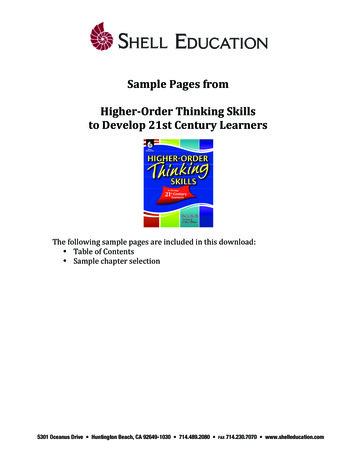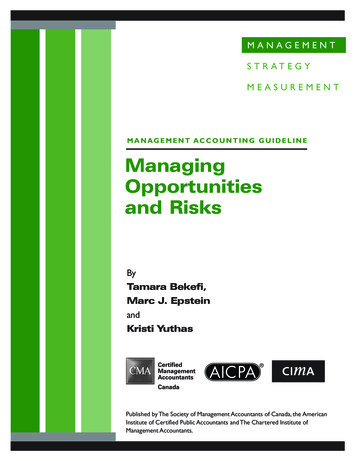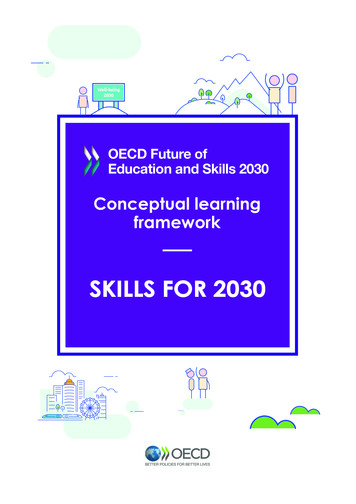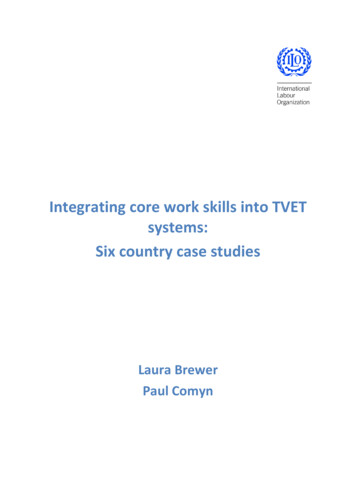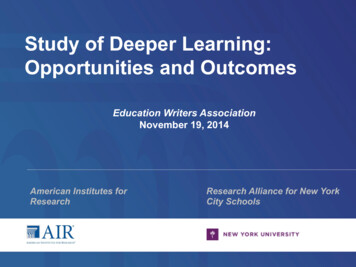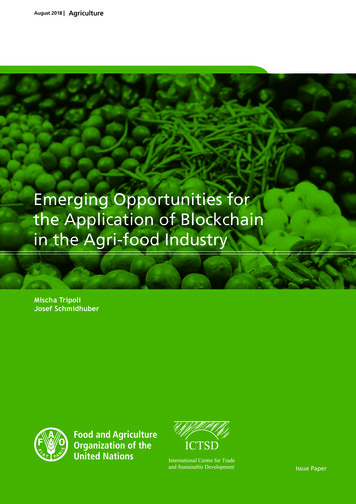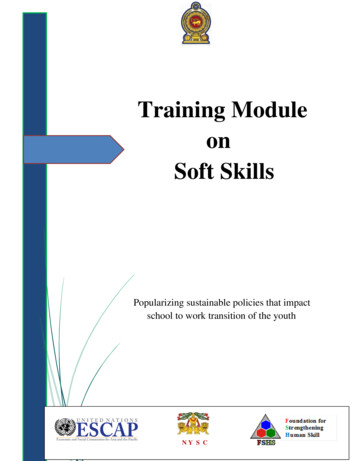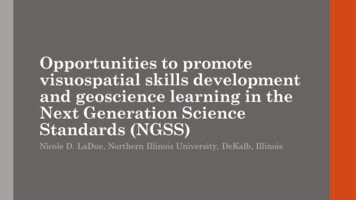
Transcription
Opportunities to promotevisuospatial skills developmentand geoscience learning in theNext Generation ScienceStandards (NGSS)Nicole D. LaDue, Northern Illinois University, DeKalb, Illinois
What are visuospatial skills?Ekstrom et al. 1976Vandenburg et al. 1978
What are visuospatial skills?Ekstrom et al. 1976Vandenburg et al. 1978
What are visuospatial skills?Paper FoldingEkstrom et al. 1976Mental RotationVandenburg et al. 1978
What are visuospatial skills?Paper FoldingEkstrom et al. 1976DomainGeneral:SkillsandabilitiesthatMental Rotationmay transfer to a variety of settingsVandenburg et al. 1978
What are visuospatial skills?Domain GeneralSpatial SkillsShea et al., 2001; Wai et al., 2009STEM Careers
What are visuospatial skills?Domain GeneralSpatial SkillsSTEM CareersHOW?Shea et al., 2001; Wai et al., 2009
What are visuospatial skills?
What are visuospatial skills?(Qayyum, F., Hemstra, N, Singh, R., 2013)
What are visuospatial skills?Courtesy of R. Scherer, NIU)
What are visuospatial skills?Domain Specific: Abilities and skillsassociated with particular settingCourtesy of R. Scherer, NIU)
What are visuospatial skills?Spatial Thinking Frameworks Newcombe, N. S., & Shipley, T. F. (2012). Thinking about spatialthinking: New typology, new assessments. Studying visual andspatial reasoning for design creativity. New York, NY: Springer. Kastens, K.A. and T. Ishikawa (2006). Spatial Thinking inGeosciences and Cognitive Sciences, in C. Manduca and D. Mogk(Eds.), Earth & Mind: How Geoscientists Think and Learn about theEarth Earth. Geological Society of America Special Publication 413 National Research Council. (2006). Learning to Think SpatiallySpatially. Washington, D.C.: National Academies Press.
Visuospatial Skills and K-121.Geoscience Assessments2.Next Generation Science Standards (NGSS)
1. Visuospatial Skills andGeoscience AssessmentsNew York State Regents Exam Given in January, June, August Available online Focus on visual representationsSample Population 144 Students (75 male) 9th Grade (m 14.6 years) 1 rural / 1 suburban 74% white
1. Visuospatial Skills andGeoscience Assessments15
1. Visuospatial Skills andGeoscience Assessments16
1. Visuospatial Skills andGeoscience Assessments17
1. Visuospatial Skills andGeoscience AssessmentsNew York State Department of Education, 201218
1. Visuospatial Skills andGeoscience AssessmentsNYS Earth Science Regents ExamText-OnlyQuestionsSpatialSkillsReference TableQuestionsVisualQuestionsLaDue & Hambrick, unpublished ms
1. Visuospatial Skills andGeoscience egents * * p .05, all others p .01LaDue & Hambrick, unpublished ms
1. Visuospatial Skills andGeoscience egents * * p .05, all others p .01Spatial skills influence performance earth science assessments.LaDue & Hambrick, unpublished ms
1. Visuospatial Skills andGeoscience egents * * p .05, all others p .01Spatial skills influence performance earth science assessments.LaDue & Hambrick, unpublished ms
Rock Distribution (%)1. Visuospatial Skills andGeoscience AssessmentsWith the appropriate domain specific training,domain general spatial skills may not influence performanceHambrick et al., 2012
2. Visuospatial Skills and NGSSIntegration of 3 Dimensions:1. Science & Engineering Practices2. Crosscutting Concepts3. Disciplinary Core Ideashttp://www.nextgenscience.org/
2. Visuospatial Skills and NGSSScience and Engineering Practices1.2.3.4.5.6.7.8.Asking questions and defining problemsDeveloping and using modelsPlanning and carrying out investigationsAnalyzing and interpreting dataUsing mathematics and computational thinkingDeveloping explanations and designing solutionsEngaging in argumentObtaining, evaluating, and org/
2. Visuospatial Skills and NGSSScience and Engineering Practices1.2.3.4.5.6.7.8.Asking questions and defining problemsDeveloping and using modelsPlanning and carrying out investigationsAnalyzing and interpreting dataUsing mathematics and computational thinkingDeveloping explanations and designing solutionsEngaging in argumentObtaining, evaluating, and org/
2. Visuospatial Skills and NGSS K-ESS2-1: Use and shareobservations of localweather conditions todescribe patterns over time. 1-ESS1-1. Use observationsof the sun, moon, and starsto describe patterns that canbe predicted.http://www.nextgenscience.org/
2. Visuospatial Skills and NGSS 2-ESS2-2. Develop a model torepresent the shapes andkinds of land and bodies ofwater in an area. 3-ESS2-1. Represent data intables and graphical displaysto describe typical weatherconditions expected in aparticular season.(Assessment of graphicaldisplays is limited topictographs and bar graphs)
2. Visuospatial Skills and NGSS 4-ESS2-2. Analyze andinterpret data from mapsto describe patterns ofEarth’s features (ex. caninclude topomaps) 5-ESS2-1 Develop amodel using an exampleto describe ways thegeosphere, biosphere,hydrosphere, and/oratmosphere interact.http://www.nextgenscience.org/
2. Visuospatial Skills and NGSS MS-ESS1-1.Develop and use amodel of the Earth-sun-moonsystem to describe the cyclicpatterns of lunar phases, eclipsesof the sun and moon, and seasons. MS-ESS2-3.Analyze andinterpret data on the distributionof fossils and rocks, continentalshapes, and seafloor structures toprovide evidence of the past platemotions.http://www.nextgenscience.org/
2. Visuospatial Skills and NGSS HS-ESS2-1.Develop amodel to illustrate howEarth’s internal andsurface processes operateat different spatial andtemporal scales to formcontinental and oceanfloor .edu
2. Visuospatial Skills and NGSS Early Development of Spatial Thinking (Newcombe &Frick, 2010) Elementary school Object vesus Embodied Perspective
2. Visuospatial Skills and NGSS Early Development of Spatial Thinking (Newcombe & Frick, 2010) Models (Rivet, A. E., & Kastens, K. A., 2012). High School, table-top models Analogical Reasoning: compare and contrast model attributes
2. Visuospatial Skills and NGSS Early Development of Spatial Thinking (Newcombe & Frick, 2010) Models (Rivet, A. E., & Kastens, K. A., 2012). Analogical Reasoning (Jee, B.D., Uttal, D.H., Gentner, D.,Manduca, C., Shipley, T.F., Tikoff, B., Ormand,C.J., and Sageman,B., 2010) Move from surface similarity to abstract concepts Identify incorrect inferences
2. Visuospatial Skills and NGSS Early Development of Spatial Thinking (Newcombe & Frick, 2010) Models (Rivet, A. E., & Kastens, K. A., 2012). Analogical Reasoning (Jee, B.D. et al., 2010) Sketching (Jee, B. D., Gentner, D., Uttal, D. H., Sageman, B.,Forbus, K., Manduca, C. A., . & Tikoff, B. (2014). More Knowledge More structures and causal relations in sketches
Next Steps Connecting Spatial Framework with Assessment Data Review Article aligning existing literature with K-12 activities Evaluating existing college-level spatial activities with K-12 students(Kastens, K. A., Pistolesi, L., & Passow, M. J., 2014)
Next Steps Connecting Spatial Framework with Assessment Data (Kastens, K.A., Pistolesi, L., & Passow, M. J., 2014) Review article aligning existing literature with K12 activities Evaluating existing college-level spatial activities with K-12 students
Next Steps Connecting Spatial Framework with Assessment Data (Kastens, K.A., Pistolesi, L., & Passow, M. J., 2014) Review Article aligning existing literature with K-12 activities Evaluating existing college-level spatial activitieswith K-12 students
What do your students see?Nicole D. LaDueAssistant ProfessorGeology & Environmental GeosciencesNorthern Illinois UniversityDeKalb, IL
Oct 14, 2014 · Learning to Think Spatially Spatially. Washington, D.C.: National Academies Press. Visuospatial Skills and K-12 1. Geoscience Assessments 2. Next Generation Science Standards (NGSS
